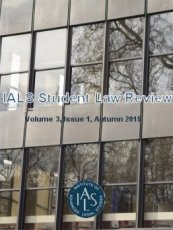Putting the Victim’s families first: The comparative analysis of the Inter-American Court of Human Rights and the European Court of Human Rights on the Right to be Free from Torture in cases of Enforced Disappearances
DOI:
https://doi.org/10.14296/islr.v3i1.2248Abstract
This article aims to assess the American Convention on Human Rights in relation to the European Convention on Human rights on the topic of decisions made in cases of enforced disappearances. Case law, peer-reviewed articles, books, and legislation were used in the course of the article. The argument in this article is that the Inter-American Court of Human Rights is more responsive to the vulnerability of the applicant to the Court, in cases of enforced disappearances, in comparison to the European Court of Human Rights. This is because the Inter-American Court uses a lesser standard of proof than beyond a reasonable doubt when assessing violations of the right to be free from torture. In contrast, the European Court uses the standard of beyond a reasonable doubt only when dealing with allegations of violations of Article 3 of the ECHR, which is the prohibition of torture. This use of the standard is inappropriate given that the role of international human rights law is not to be punitive, for that is the role of a criminal court, but rather to give reparation and redress to the victims and families of victims of human rights violations. The article finds that the Inter-American Court is more progressive than the European Court when addressing the right to be free from torture in cases of enforced disappearances due to its extensive experience, its lack of a rigid standard of proof, and its opinion on the responsibility of burden of proof.
Downloads
Downloads
Issue
Section
License
Work published in the IALS Student Law Review is licensed under a Creative Commons Attribution-NonCommercial-NoDerivs 3.0 Unported License.
Those who contribute items to IALS Student Law Review retain author copyright in their work but are asked to grant two licences. One is a licence to the Institute of Advanced Legal Studies, School of Advanced Study of the University of London, enabling us to reproduce the item in digital form, so that it can be made available for access online in the open journal system and repository and website. The terms of the licence which you are asked to grant to the University for this purpose are as follows:
'I grant to the University of London the irrevocable, non-exclusive royalty-free right to reproduce, distribute, display, and perform this work in any format including electronic formats throughout the world for educational, research, and scientific non-profit uses during the full term of copyright including renewals and extensions'
The other licence is for the benefit of those who wish to make use of items published online in IALS Student Law Review and stored in the e-repository. For this purpose we use a Creative Commons licence allowing others to download your works and share them with others as long as they mention you and link back to your entry in IALS Student Law Review and/or SAS-SPACE, but they can't change them in any way or use them commercially.



